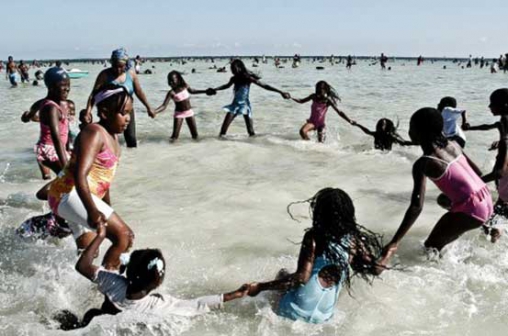
More than 4,000 girls aged between nine and 17 engage in prostitution with tourists annually at the Coast, a new study says.
The study by an NGO that monitors child sexual abuse and trafficking trends, says these children are mainly from Mombasa, Kilifi and Kwale counties.
Trace Kenya Executive Director Paul Adhoch said: “... young girls between 9 and 17 years are involved in transactional sex in these areas which have beach hotels frequented by tourists. There are between 3,000 and 4,000 girls trapped in this trade.”
Mr Adhoch told The Standard on Saturday that the figure could be higher since the study was done in 2014.
Popular resorts
Quoting the findings, Adhoch disclosed that the culprits are mainly tourists — domestic and international — who target girls in need of quick money. He revealed that in some cases, relatives of these girls lure them into sex for money affairs.
Citing common trends, he pointed out that sex trade tends to pick up during the holiday season when tourists flock coastal resorts.
“We are heading towards Easter holidays and the tourists are flocking our hotels. This is the time when girls have sex with these people in exchange for money and other goodies,” said Adhoch.
Other than tourists, boda boda operators and truck drivers also target girls seeking quick money.
The organisation has noted that in addition to child prostitution, another common trend in child abuse is early and forced marriages especially among pastoralist communities namely the Orma and Wardei in Tana River County.
“When children reach the age of nine, they are given out as brides but the official marriage takes place as soon as they have completed Standard Eight,” he explained.
No realiable data
In these communities, girls are enrolled in schools when they are ten years and over and once they complete Class Eight, they are 18 years and have identification cards.
“In fact, this is what parents use to defend themselves when asked why they married off their children at a tender age,” he said.
Stay informed. Subscribe to our newsletter
Another trend is that more boys are increasingly being sexually abused. Reacting to the report, Maurice Tsuma the Kilifi County Coordinator for Children Services, said child prostitution occurs in the region but admits authorities have no reliable statistics and data.
“Child sexual abuse is real. We just have reports but there are no statistics,” he said.
Mr Tsuma added that initially foreign tourism was fueling the trade but now they have noticed that domestic tourists are also involved in it.
Mombasa County Coordinator for Children Services Elizabeth Mbuka said there have been about 30 cases of child trafficking in the last four months. Victims she noted, are children from Rwanda, Burundi, Tanzania and Uganda.
“Children between the age of two to 15 years are being abused everyday by people known to them and when it comes to trafficking, in the last four months, we have received 30 cases of child trafficking and the victims are from different countries,” said Mbuka.
Gaps in law
Adhoch also revealed despite the improved anti-trafficking efforts, the government has not done much in enforcement of the law.
“Kenyan laws prohibit and criminalise all forms of human trafficking, but the laws are not enforced as prescribed, neither are penalties sufficient to deter trafficking in persons. The Sexual Offenses Act 2006 for instance is not widely used by prosecutors to offer stringent punishment,” read the report.
According to the study, the Government also lacks adequate protection mechanisms for adult victims often treated as criminals. The report further revealed that the Counter Trafficking in Persons Act 2010 is yet to be fully implemented. The report revealed that a number of youth are victims of modern day slavery especially those who go to Middle East in pursuit of greener pastures.
“They face exploitation mainly because of naivety and poverty. We recommend a regulation of employment recruitment agencies, a structured labour export procedure and a joint policy paper on migration with all relevant stakeholders,” said the report.
Though there is a national plan of action for counter trafficking, loopholes remain.
“Though we have the law, it has been a challenge differentiating between sexual abuse and child trafficking especially at the court and police level,” said Tsuma.
 The Standard Group Plc is a
multi-media organization with investments in media platforms spanning newspaper
print operations, television, radio broadcasting, digital and online services. The
Standard Group is recognized as a leading multi-media house in Kenya with a key
influence in matters of national and international interest.
The Standard Group Plc is a
multi-media organization with investments in media platforms spanning newspaper
print operations, television, radio broadcasting, digital and online services. The
Standard Group is recognized as a leading multi-media house in Kenya with a key
influence in matters of national and international interest.
 The Standard Group Plc is a
multi-media organization with investments in media platforms spanning newspaper
print operations, television, radio broadcasting, digital and online services. The
Standard Group is recognized as a leading multi-media house in Kenya with a key
influence in matters of national and international interest.
The Standard Group Plc is a
multi-media organization with investments in media platforms spanning newspaper
print operations, television, radio broadcasting, digital and online services. The
Standard Group is recognized as a leading multi-media house in Kenya with a key
influence in matters of national and international interest.









